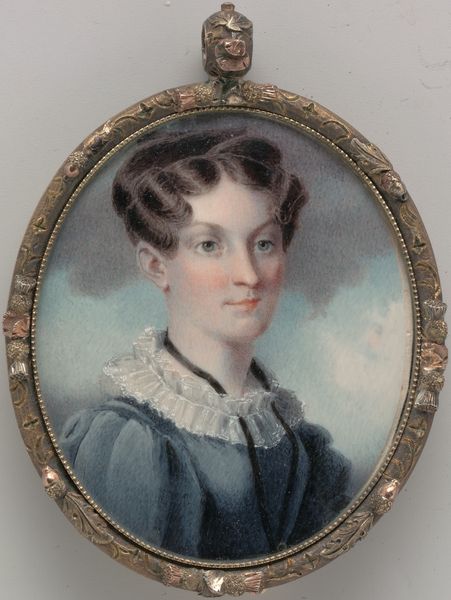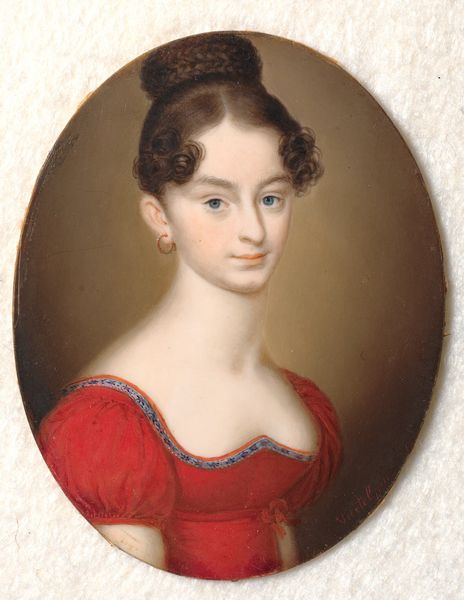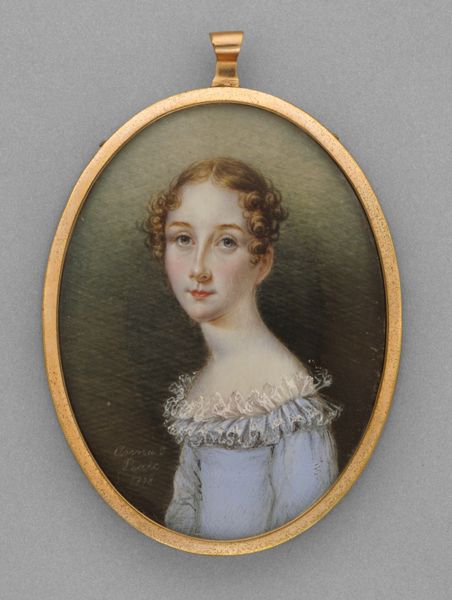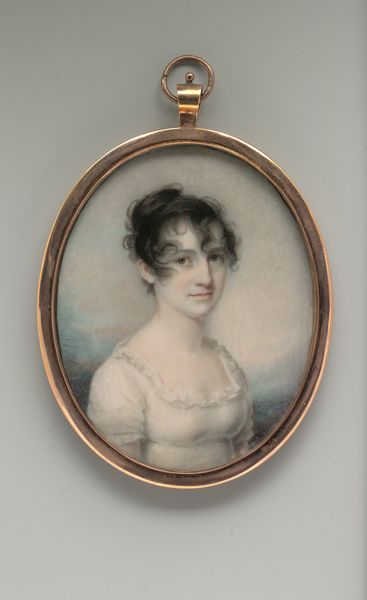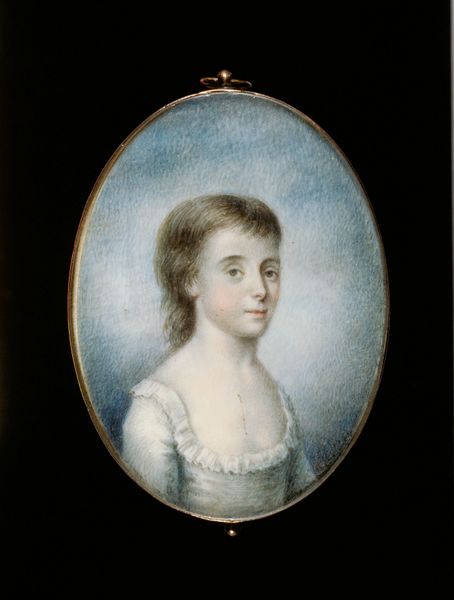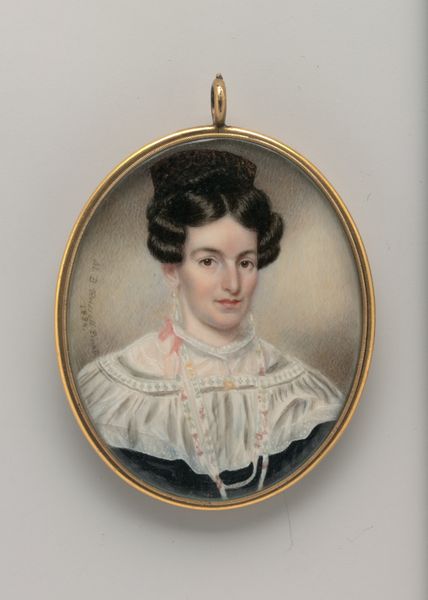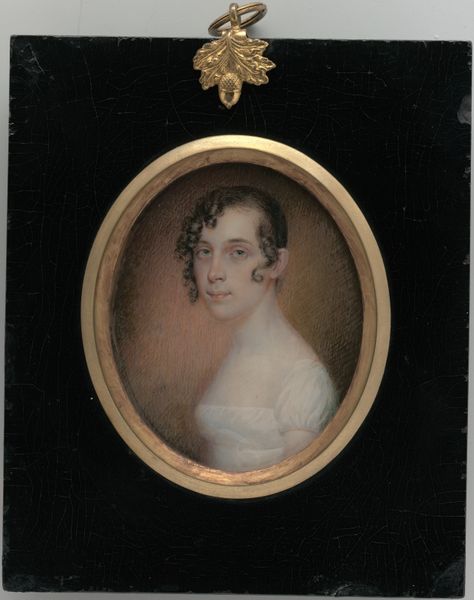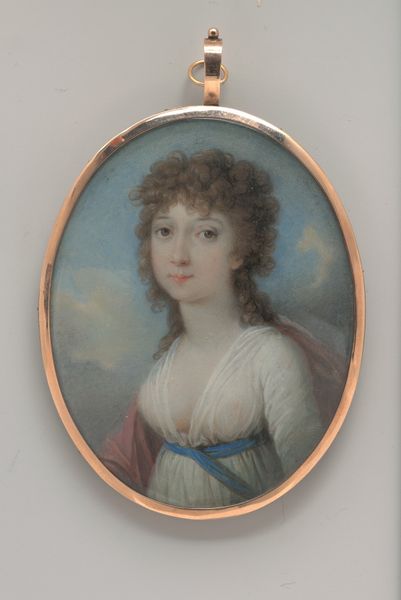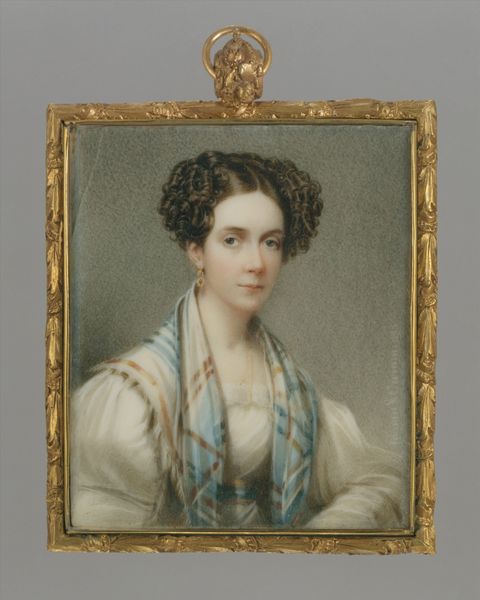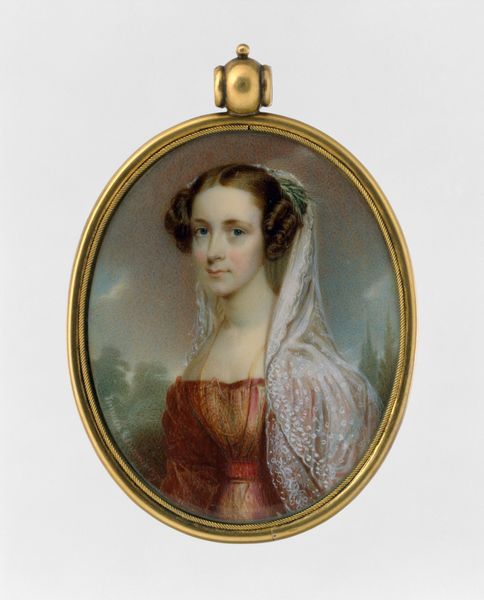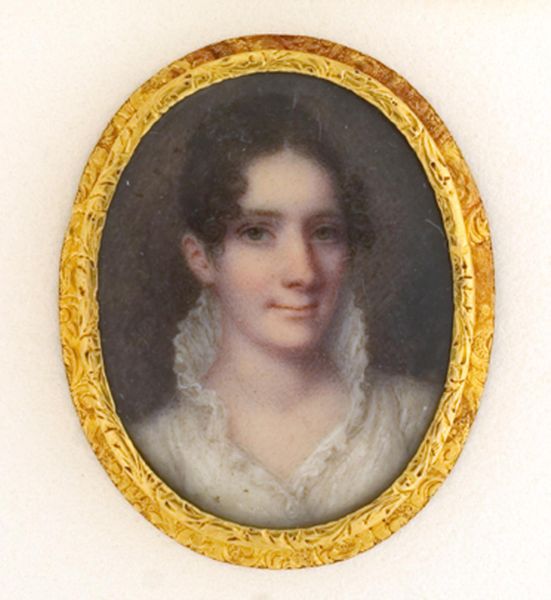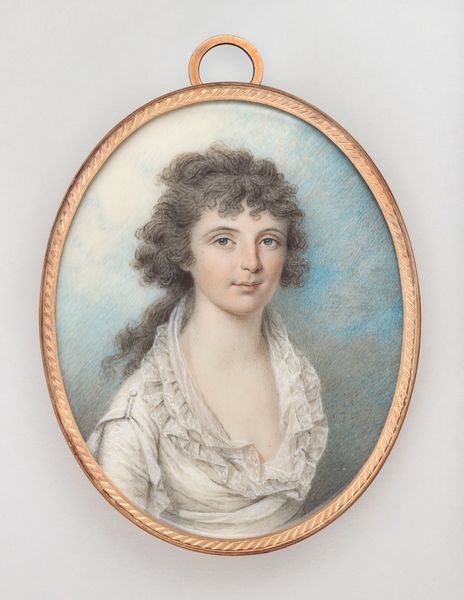
painting, oil-paint
#
portrait
#
painting
#
oil-paint
#
intimism
#
romanticism
#
miniature
Dimensions: Oval, 2 1/2 x 2 1/8 in. (65 x 54 mm)
Copyright: Public Domain
Curator: Here we have a miniature portrait of Lola Montez, painted in the early to mid-19th century by Josef Heigel. Editor: It's incredibly delicate. The limited palette creates such a quiet, intimate atmosphere. I'm immediately struck by the meticulous brushwork. How does one even achieve such fine detail? Curator: Miniatures were often intensely personal objects. The small scale fostered intimacy; they were intended to be held, to be kept close. Consider the fine gold frame, less a frame, really, more of a setting for a precious jewel. These were often love tokens, family keepsakes. Lola Montez herself was a fascinating figure. Editor: Interesting, so how did the choice of materials amplify its societal functions and meanings? Was it about portraying status through the use of precious metals and refined pigments, or something more personal? And where did Heigel source his materials? Curator: Both! There’s an inherent tension: the public display of status through portraiture versus the private intimacy of the miniature form. The use of oil paints on such a small scale suggests that Heigel prioritized precision. Every carefully placed brushstroke emphasizes Lola's individual features while capturing something of the Romantic era ideal of beauty. I wonder if her expression conveys the weight of the gaze upon her. Editor: Right, the weight. It also hints at a broader network of material exchange – the trade routes that brought the pigments and metals to the artist's hand. Someone somewhere, under completely different working conditions extracted these elements from the earth and manufactured them for this particular artwork. It almost belies its sense of intimacy and privacy. Curator: Precisely! These images held great power – as reflections of beauty, memory, and, perhaps more insidiously, as vehicles for projecting certain values and reinforcing social hierarchies. The curl of her hair seems a direct echo of paintings found in antiquity. Her beauty embodies power; beauty IS currency, a means to ascend and to hold social power. Editor: So we're reminded that even the most seemingly intimate object has ties to this broader web of materials, labor, and historical context. Curator: Yes. Perhaps that tension is part of what makes this miniature so compelling.
Comments
No comments
Be the first to comment and join the conversation on the ultimate creative platform.
